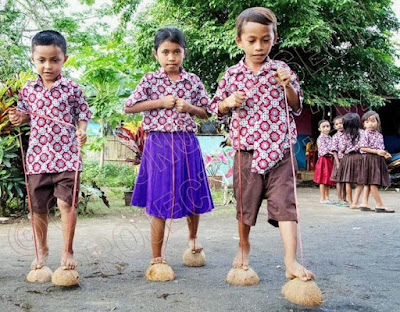For illustrating this section, we can produce on request at least one large size HD poster (up to 180x100 cm in size). This poster will be adapted to each country, on a case-by-case basis, in order to prominently feature local specificities.
©R. Bourdeix, 2021, section CFE.

 |
| Coconut shy equipement is still sold on Ebaywebsite |
Now, there are even online versions of the coconut shy game!

In India, the ancient game of coconut snatching was used for military selection; Clash of the Coconuts is a fun Indian Wedding Game. After the bride and groom are officially married, the couple have to be seated facing each other with a 10 feet distance between them. The coconuts are then brought in. The goal of this Punjabi wedding game is for the bride and groom to roll their respective coconuts towards each other and aim them to collide midway.
In Thailand, the Dern Kala game utilizes a traditional toy that is made from a pair of coconut shells or husk. The aim of the game is for players to compete to see who can move fastest while standing on it.
.
Children of countries of Vietnam, Malaysia,
Laos and Cambodia often take advantage of dry coconut leaf for the games.
Meanwhile, a player sit on a leaf base, the rest hold mid rib and then pull
away. Just so, which team finishes first and not to fall from the leaf base,
they win.
 |
| Coconut shy game in England, more than one century ago! |





